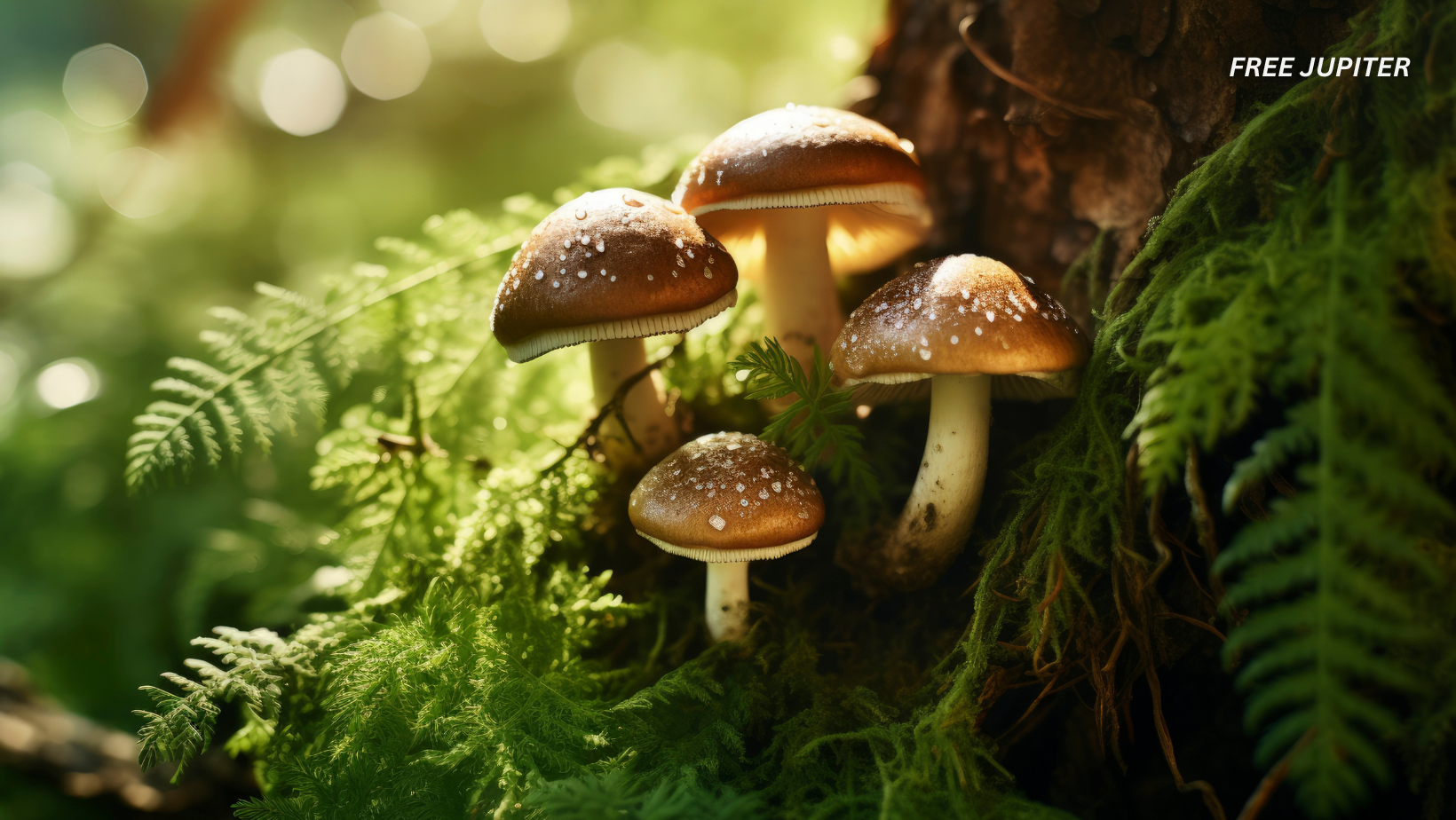Friendly Note: FreeJupiter.com shares general info for curious minds 🌟 Please fact-check all claims—and always check health matters with a professional 💙
Mushrooms have long had a reputation for being mysterious. Some are delicious, some are deadly, and a few send your brain on cosmic adventures. But according to a new study, their magic may not end there. Scientists in the UK are now exploring the idea that mushrooms might actually communicate with one another—and not in a vague or symbolic way, but through electrical signals that resemble words. In fact, some fungi may have vocabularies as rich as 50 “words.”
Sound like science fiction? Maybe. But this new research, led by Professor Andrew Adamatzky of the University of the West of England (UWE) in Bristol, brings an unexpected twist to the secret life of mushrooms. Using technology and a curious mind, he recorded patterns in fungal activity that look suspiciously like language.
Let’s dig in—pun intended.
Fungi 101: The Underground Network Beneath Our Feet
Before we talk about mushrooms “talking,” let’s take a quick trip underground.
Mushrooms are just the tip of the iceberg, the fruiting body of a much larger organism that lives below the surface. That organism is made up of thin, thread-like structures called hyphae, and together, they form a web called mycelium. Mycelium acts almost like a neural network, spreading through soil or wood and connecting with plants, trees, and even other fungi. Some scientists have compared it to nature’s version of the internet—an invisible, living web that transmits information and nutrients through the forest floor.
The big question has been: is mycelium just a nutrient delivery system, or is it also a communication network?
Plugging Into the Mushroom “Mind”
To explore this question, Adamatzky didn’t just observe the mushrooms—he listened to them.
He placed tiny electrodes into the soil colonized by four types of mushrooms: enoki, split gill, ghost fungus, and caterpillar fungus. These electrodes picked up electrical impulses generated by the hyphae as they grew and interacted with their environment. Over time, he recorded patterns in those impulses—clusters of electrical spikes that didn’t seem random.
When analyzed, the spikes showed structure. Some were longer, some were shorter, and some repeated in a way that resembled words in human language. According to Adamatzky’s analysis, these patterns could form a kind of “fungal vocabulary” of up to 50 different words.
That’s right—mushrooms might be using their own secret code to pass along messages.
Read more:
Which Mushrooms Are the Chattiest?
Among the four types of fungi studied, one stood out: split gill mushrooms, which are commonly found on decaying wood. These fungi produced the most complex patterns—essentially, the longest and most varied “sentences.”
It’s as if some mushrooms are reserved introverts, and others are natural-born talkers.
Split gill mushrooms seem to excel at forming long, structured strings of electrical activity, much like the way we form sentences with a subject, verb, and object. While the comparison isn’t exact (we’re not saying mushrooms are telling jokes or sharing secrets), the patterns are suggestively organized.
Why Would Mushrooms Talk in the First Place?
If the idea of mushrooms talking to each other sounds like something out of a fantasy novel, you’re not alone. But in nature, communication isn’t just about words—it’s about survival. And even for organisms without eyes, ears, or mouths, sharing information can mean the difference between thriving and withering away. So, if mushrooms are exchanging signals underground, what would they be talking about?
Let’s break it down.
1. Coordinating Growth: “Hey, I’m Expanding Over Here!”
One possible reason mushrooms might “speak” is to coordinate their growth. Mycelium, the web-like root system beneath the soil, is constantly exploring its environment, seeking out nutrients and space to grow. But if too many fungal threads crowd into the same area, they risk competing with each other or wasting energy.
By sending out electrical signals—like a fungal form of sonar—mushrooms might be letting each other know where they are, so they can grow more efficiently. It’s like a silent agreement: “You take the east, I’ll go west.”
2. Sharing Information About Food: “Jackpot!”
Mushrooms don’t just live off sunshine like plants. They depend on organic matter—wood, leaves, dead insects—to survive. So, if one patch of mycelium finds a rich food source, it may be beneficial to signal nearby colonies. By sending a “message” through the network, fungi could be calling in reinforcements or sharing the location of a tasty decaying log.
Imagine a system where mushrooms are constantly broadcasting things like, “Nutrients detected at 4 o’clock—send help!” That’s a game-changer in how we understand fungal intelligence.
Read more:
3. Warning About Threats: “Danger Incoming!”
Mushrooms, like all living things, face danger. Drought, predators, chemical changes in the soil—all of these can pose serious threats. One theory is that fungi might use electrical impulses to warn each other of these environmental changes.
Let’s say a sudden cold front hits one side of a forest. The mushrooms experiencing the drop in temperature could trigger a signal that alerts other parts of the mycelial network to brace for the change. It’s a little like nature’s early warning system—quiet, subtle, but potentially life-saving.
4. Establishing Territory: “This Spot’s Taken”
Some fungi are territorial. When multiple colonies exist in the same environment, they may need to stake their claim—without getting into a root-level turf war. In this context, signaling could serve as a polite but firm message to neighboring fungi: “This patch of soil is occupied. Please expand elsewhere.”
Rather than battling for dominance, mushrooms may be using their electrical signals as boundary markers, keeping interactions peaceful and growth organized.
5. Maintaining Fungal Relationships: “Are You Still There?”
Many mushrooms are involved in complex relationships with plants, especially trees. These partnerships, known as mycorrhizal relationships, benefit both sides: the fungus helps the tree absorb nutrients, and in return, the tree feeds the fungus sugars created through photosynthesis.
Communication might help maintain these relationships. If the tree starts to struggle, the fungus could detect the change and adjust its behavior. Likewise, the fungus might alert its plant partner to a shift in the soil, such as a drop in moisture or a sudden influx of toxins. These back-and-forth signals help maintain balance in the underground ecosystem.
6. Forming a Collective Intelligence?
Here’s where things get even more fascinating—and a little sci-fi.
Some researchers believe that networks of fungi may operate as a form of “collective intelligence.” Not quite a brain, not quite a hive mind, but something in between. If fungal colonies can share data, make decisions based on that information, and respond as a group, they may be functioning like a decentralized intelligence system.
The Skeptical Side of Science
But here’s the twist—just like with any good scientific claim, not everyone is buying the idea just yet.
Even Professor Adamatzky, the researcher behind the study, admits the electrical spikes might not mean anything at all. He notes that the spikes could simply be a result of the way mycelium grows. As the electrically charged hyphae move past the electrodes, they create blips in the signal—blips that look meaningful but might be nothing more than natural noise.
“There is also another option—they are saying nothing,” he states plainly.
Other scientists echo that caution. Mycologist Dan Bebber of the University of Exeter, who’s studied fungi extensively, says while the patterns are intriguing, we’re a long way from claiming fungi have a true language. “Though interesting, the interpretation as language seems somewhat overenthusiastic,” he says. In short: fascinating, but let’s not start translating mushroom just yet.
Plants and Fungi: Nature’s Quiet Communicators
This isn’t the first time scientists have suggested that nature might be far more expressive than we give it credit for.
In 2018, researchers in the United Arab Emirates conducted a study where they “insulted” plants—and found that negative speech actually affected plant growth. So yes, yelling at your houseplant might stress it out.
Add that to the growing body of evidence showing that trees can send distress signals, plants can detect vibrations, and now mushrooms might be talking—and you start to see a pattern. Nature may not speak in words, but it definitely has something to say.
Read more:
So, Are Mushrooms Secretly Whispering to Each Other?
Maybe. Maybe not.
What’s clear is that mushrooms are more than meets the eye. Beneath the soil, within the mycelium, a world of electrical activity is happening—some of it surprisingly structured. Whether it’s an actual language or just smart biology, we don’t know yet. But the idea that mushrooms might be quietly chatting away beneath our feet is a delightful mystery worth exploring.
The next time you take a walk in the woods and step over a patch of fungi, consider this: you might just be interrupting a conversation.










